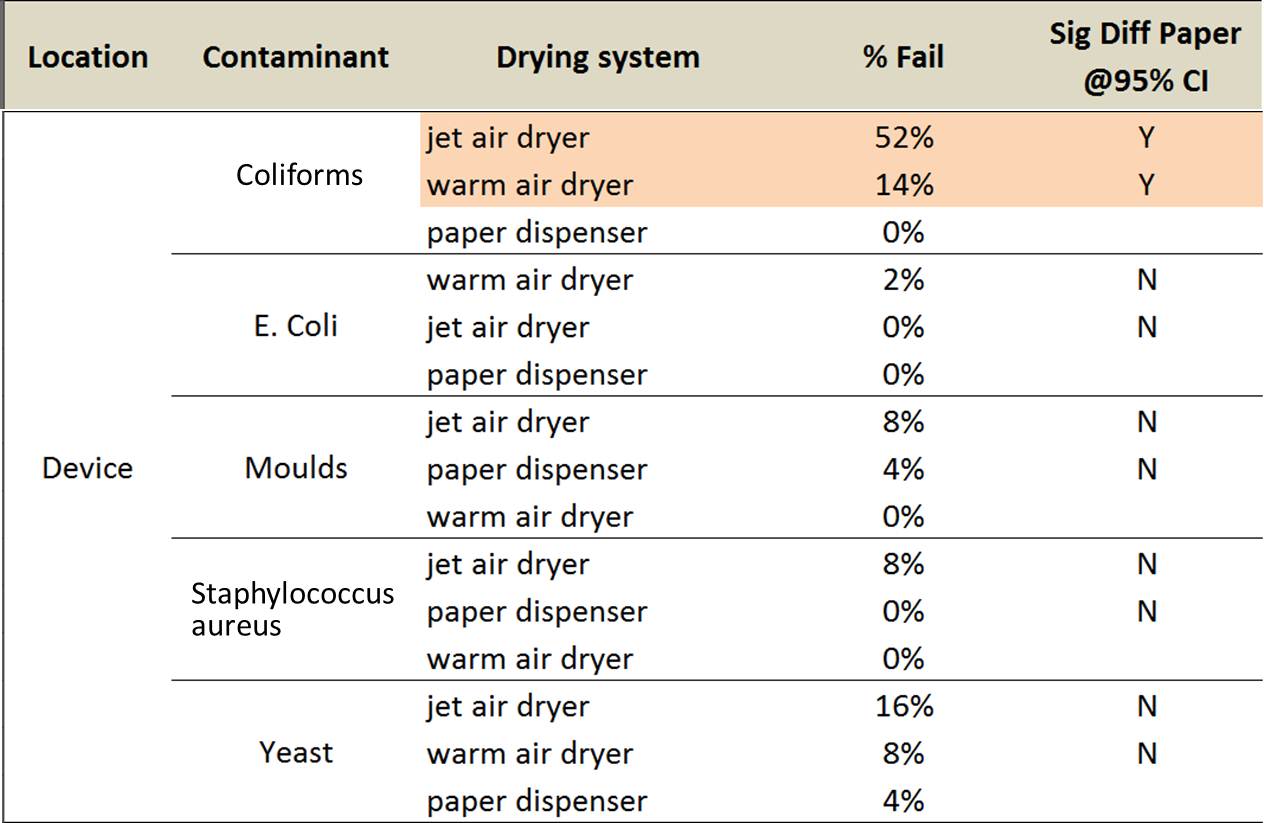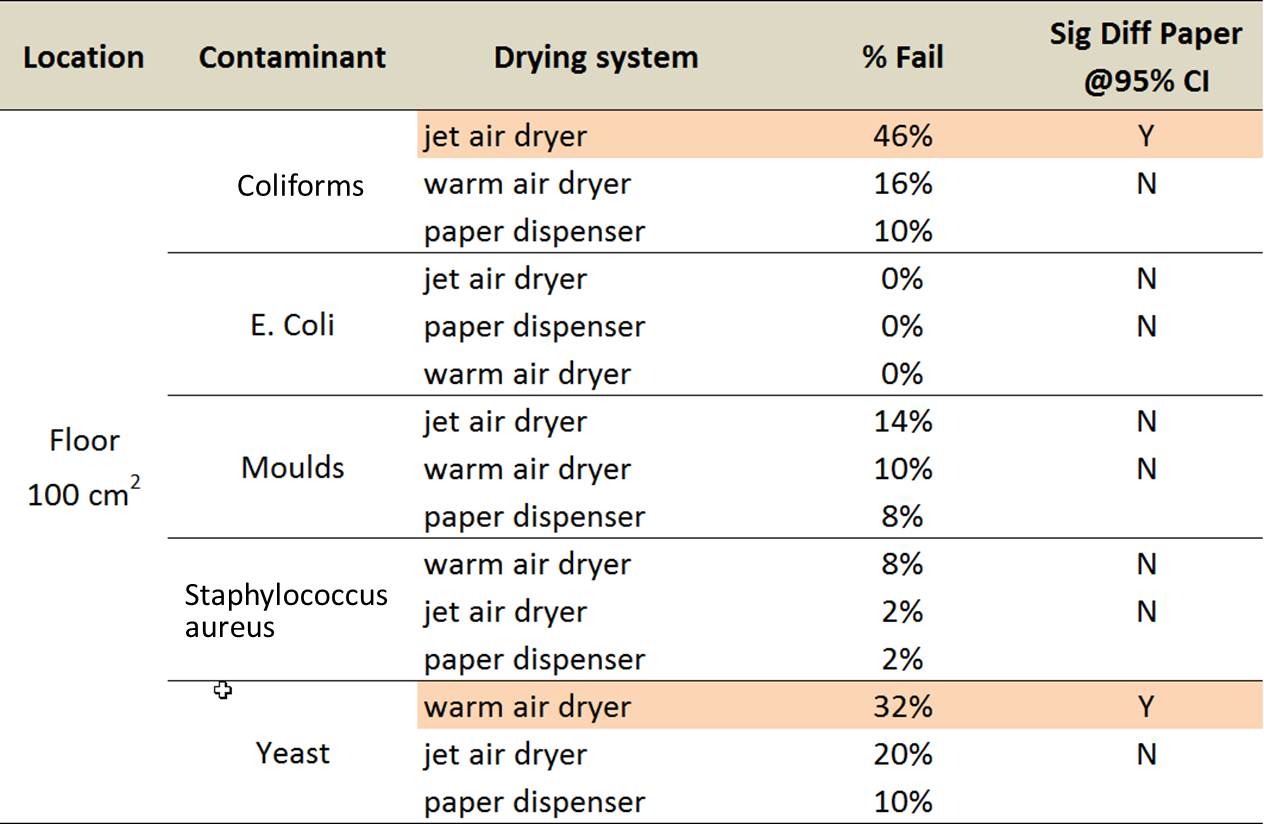Eurofins-Inlab Study
Eurofins-Inlab is a leading Institute for Microbiology of food, analyses, hygiene of companies and environmental hygiene. Inlab was founded in 1992 as a microbiology laboratory of food. Inlab is member of the Eurofins Group since December 1st, 2007.
• ETS commissioned a study at Eurofins-Inlab for the assessment of the microbiological contamination of three types of hand drier equipment in public washrooms. The study was carried out in various settings in the Ruhr region, West Germany (Feb-May 2012). The protocol of the study is available at this link: Drier Sampling Protocol
• 150 washrooms were selected by Eurofins –Inlab (ETS doesn’t know their location) and contained jet air driers, warm air driers, or hand towel dispensers (50 of each). They were balanced to represent high versus low use settings.
• The sampled surfaces were those most likely touched during hand drying, i.e. the inside surface of jet air driers, the inside or outside surfaces of the outlet tube of warm air driers, and the outlet (bottom) of paper towel dispensers.
Also a surface area (100 cm2) of the floors below was sampled.
• The samples were processed to determine the total number of microorganisms and numbers of potential pathogens (e.g. Staphylococci including Staphylococcus aureus, and coliforms including Escherichia coli).
• As the sampled drier device surfaces differed in size, measured microbial counts were reanalysed according to counts per unit surface area.
Eurofins-Inlab sampled 150 sites between February and May 2012. This is the affirmation letter Eurofins letter for affirmation sampling.
These are examples -one by type of dryer: Paper Towels Dispensers, Jet Air Dryer, Warm Air dryer- of the analytical reports (the reports were 150 in total).
1 Analytical report AR-12-DT-013066-01 Paper Towels Dispenser
2 Analytical report AR-12-DT-012424-01 Jet Air Dryer
3 Analytical report AR-12-DT-010562-01 Warm Air Dryer
The key results of the Eurofins-Inlab study are reported in the following TABLES
(Thanks to K-C and SCA for carrying out the statistical analysis on behalf of ETS):
In the Summary Table you can observe for example that the Geometric Mean of the Aerobic bacteria found on the surface of a Jet Air Dryer was 1,84 E+06 (which means 1849000 There is also a significant difference between the counts of Staphylococci for the jet air driers and the paper hand towel dispenser [292,000 versus 366], i.e. again, also for the Staphylococci, jet air driers are approx. 800 times more contaminated than Paper Towels Dispensers. A comprehensive, 13 pages presentation of the Eurofins Inlab study is available here: Eurofins-Inlab study presentation . The following graph is given in the presentation and it describes the fact that: “on average, the user of a jet air dryer is likely to be exposed to over 1000 times more micro-organisms than the user of a paper hand towel dispenser. As indicated above Eurofins-Inlab selected and sampled 150 Washrooms in the Ruhr region, West Germany. The devices installed in the sampled sites are listed in the following file: Devices installed in the Eurofins-Inlab selected washrooms A Press Information summarizing the Eurofins-Inlab study comparing air dryers with paper hand towel dispensers results is available in different languages:
In other words the Aerobic Bacteria found on Jet Air Dryers were 1000 times more than those found on Paper Towels Dispensers.
See also the NDR-ARD TV program, about a survey in washrooms where Dyson Jet Air Dryers are used, which reaches the same results.















